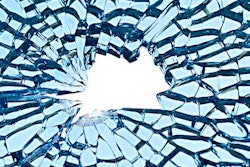
Women and members of racial and ethnic groups are significantly underrepresented in nuclear medicine (NM) in the U.S., according to research published April 25 in the Journal of Nuclear Medicine.
In a survey of accredited residency training programs across the country, researchers found a diversity gap exists at the resident level, is greater at the nuclear medicine faculty level, and is even more pronounced in nuclear medicine leadership positions. The survey could inform efforts to improve the provision of equitable and culturally competent patient care in the field, the authors suggested.
 Dr. Elizabeth Dibble.
Dr. Elizabeth Dibble."Shared traits between patients and physicians including gender and race or ethnicity have been linked to better communication, adherence to medical recommendations, and overall health care outcomes," wrote corresponding author Dr. Elizabeth Dibble, an assistant professor of diagnostic radiology and clinician educator at the Alpert Medical School of Brown University, and colleagues.
Previous studies have documented significant inequities in medical imaging; for example, a 2018 study found that women comprised 27.2% of radiologists in the U.S. However, there is a paucity of data on the representation of women and members of racial and ethnic groups in nuclear medicine.
In this study, Dibble and colleagues sought to characterize the state of women faculty members and trainees in accredited U.S. academic nuclear medicine residency programs. They sent anonymous surveys to residency directors of the 41 accredited programs in the U.S. between September and December 2018. Underrepresented racial and ethnic groups in medicine were defined in the survey according to U.S. Census Bureau categories such as Black/African American, American Indian/Alaska Native or Native Hawaiian/Pacific Islander, or Hispanic/Latinx.
Out of the 23 nuclear medicine residency program directors who responded, 18 were male, five were female, and three reported being in an underrepresented racial or ethnic group. The program directors in turn described the demographics of 121 current nuclear medicine faculty members: 86 (71.1%) were male, 35 (28.9%) were female, and 65 (53.7%) were U.S. graduates. Eight of the men (6.6%) and seven of the women (5.8%) were identified as members of underrepresented racial or ethnic groups.
| Demographics of nuclear medicine residents and faculty | ||||
| Residents (n = 60) | Faculty (n = 121) | Division chiefs (n = 34) | Program directors (n = 23) | |
| Male | 37 (61.7%) | 86 (71.1%) | 16 (69.6%) | 18 (78.3%) |
| Female | 23 (38.3%) | 35 (28.9%) | 7 (30.4%) | 5 (21.7%) |
| URiM* | 12 (20%) | 15 (12.4%) | 4 (17.4%) | 3 (13%) |
| U.S. graduates | 14 (23.3%) | 65 (53.7%) | ||
| IMGs** | 46 (76.6%) | 56 (46.3%) | ||
In addition, the researchers assessed the extent to which students received exposure to nuclear medicine. Just seven out of 20 (35.0%) of the program directors who responded to the survey reported that nuclear medicine is part of their medical school curriculum. Among schools where nuclear medicine was offered, a majority offered the curriculum in the third and fourth years.
Physicians often cite exposure in medical school as a critical factor in specialty choice, and previous research has shown that women have less preclinical radiology exposure than men, the authors noted.
"Increased and earlier exposure of NM, especially to women and [underrepresented minority and ethnic groups], may improve recruitment and mitigate diversity gaps," the researchers suggested. The incorporation of all facets of nuclear medicine and molecular imaging into the medical school curriculum, from imaging interpretation to NM therapies, is warranted, they added.
The authors noted a limitation in that they only surveyed program directors of residency programs accredited by the Accreditation Council for Graduate Medical Education and not nuclear radiology fellowships, nuclear medicine therapy fellowships, nonaccredited nuclear medicine fellowships, or radiology residency programs with participants in the 16-month combined diagnostic radiology/nuclear radiology dual certification pathway.
Nonetheless, the authors stated they hope the study encourages readers to evaluate the diversity of their workforce and assess whether it matches their community.
"Possible strategies to address diversity gaps in [nuclear medicine] include increasing early exposure to NM, increasing NM mentorship and sponsorship, increasing awareness of structural racism and structural gender bias and how to combat them, and implementing leadership training, especially for women and members of racial and ethnic URiM groups," they concluded.



















